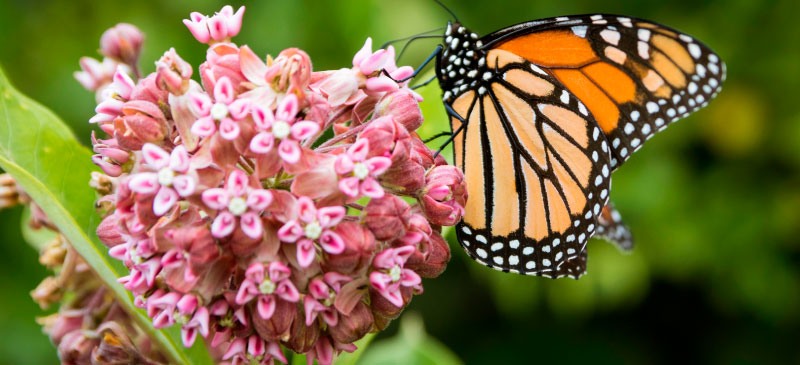This Dr. Axe content is medically reviewed or fact checked to ensure factually accurate information.
With strict editorial sourcing guidelines, we only link to academic research institutions, reputable media sites and, when research is available, medically peer-reviewed studies. Note that the numbers in parentheses (1, 2, etc.) are clickable links to these studies.
The information in our articles is NOT intended to replace a one-on-one relationship with a qualified health care professional and is not intended as medical advice.
This article is based on scientific evidence, written by experts and fact checked by our trained editorial staff. Note that the numbers in parentheses (1, 2, etc.) are clickable links to medically peer-reviewed studies.
Our team includes licensed nutritionists and dietitians, certified health education specialists, as well as certified strength and conditioning specialists, personal trainers and corrective exercise specialists. Our team aims to be not only thorough with its research, but also objective and unbiased.
The information in our articles is NOT intended to replace a one-on-one relationship with a qualified health care professional and is not intended as medical advice.
Milkweed: The #1 Plant You Need to Start Growing ASAP
July 21, 2022

If there’s one plant to work into your landscape, it’s milkweed. Native to North America, different milkweed varieties aren’t only beautiful, but they help support a wide variety of pollinators required for a healthy food chain that humans depend on.
It also serves as a lifeline for monarch butterflies, an iconic North American insect that’s in deep trouble throughout the United States due to toxic pesticide use, climate change and devastating habitat loss.
Although some people view milkweed as a, well, “weed,” the truth is it provides more ecological services to humans compared to many common non-native plant species that originated in other countries.
With that in mind, growing milkweed in your yard and promoting plantings in your community’s housing developments, playgrounds, parks, school properties and roadside areas is more important than ever because so much is at stake.
What Is Milkweed?
Common milkweed, or Asclepias syriaca, includes over 100 species in North America. It’s a flowering perennial that produces a milky substance that contains cardiac glycosides.
Although the plant often goes unnoticed, growing in fields, among wildflower gardens and along roadsides, it was actually used by Native Americans to treat health issues like coughs, asthma and warts.
This plant can grow to be five feet tall, and it grows clusters of flowers that are typically shades of pink and purple.
Common milkweed is known as nature’s mega food for over 400 insects. If you see it growing on a piece of property, you likely see bees, caterpillars, butterflies, beetles and ants there too.

Benefits/Uses
For many, planting milkweed makes for a beautiful addition to the garden in its own right, producing some of the most complex flowers in the animal kingdom, but its benefits go far beyond the plant’s appearance.
Historically, it was used as a natural remedy by some Native American tribes. An article from “The Old Farmer’s Almanac” highlights that the plant was used to remove warts, treat dysentery and relieve respiratory issues, like cough and asthma.
For modern purposes, milkweed has the following uses and benefits:
1. Improves Biodiversity
Because the relationship between caterpillars, butterflies, monarch migration and milkweed is such a complex issue, it sometimes feels like it’s out of our control. Nothing could be further from the truth!
Milkweed works to build stronger biodiversity in your neighborhood and beyond, and it has several other benefits, too.
2. Provides Pest Control, Including Stink Bugs
Milkweed actually has the power to make your life easier in the garden. A Washington State University study investigating the pest-control aspects of the plant turned up some really interesting findings:
- It is a cheap and simple way to support pollinator health and to get pests under control.
- Native milkweed plants attract beneficial insects like parasitic wasps, carnivorous flies and predatory bugs that suppress common pests like aphids, leafhoppers, thrips and even stink bugs
Another recent study highlighted a Georgia peanut farm that successfully used milkweed plantings to increase Tachinid fly numbers. Why would you want these insects? They act as parasites to pesky stink bugs, offering inexpensive, chemical-free pest control.
3. Helps Clean Contaminants
The “silk” found in milkweed pods is often utilized to help absorb contaminants during oil spills.
Interestingly, the seed pod fibers absorb more than four times the amount of oil compared to the plastic-based materials currently used during oil spill cleanup projects. Encore3, a Canadian company, created milkweed fiber-based kits that absorb 53 gallons of oil at a rate of .06 gallons per minute.
How does that cleanup rate compare to the polypropylene products on the market? It sponges up spilled oil twice as fast.
Related: Gymnema Sylvestre: An Ayurvedic Herb That Helps Fight Diabetes, Obesity & More
How to Grow
The landscape in the United States today is much different than the biologically diverse terrain Native Americans foraged on centuries ago. In the present-day U.S., the stray milkweed plants that once grew in and around farm fields and wildflower meadows have been annihilated by chemical pesticides.
In just the last two decades, we’ve seen a nearly 90 percent decline in monarch populations, and a team of U.S. researchers identified glyphosate as one of the main driving factors.
This is why consciously planting milkweed has become so important, on top of avoiding the use of chemical pesticides and herbicides on your property. Planting native species makes your garden the site of birds, bees and other creatures that thrive in this natural habitat.
You can plant milkweed species directly in soil or start them from milkweed seeds by scattering them about half an inch under soil surface and covering them. Planting milkweed in the fall is ideal, but you can also plant it in the springtime.
The plants prefer sunny areas, and because they’re native, they can adapt well to drier conditions.
What is the best kind of milkweed for monarchs and better biodiversity? The National Wildlife Federation identified these 12 species as the best to plant for monarchs.
Check out this breakdown to see pictures and the native range of each plant. That’ll help ensure it’s the right kind for your state and conditions.
- Common Milkweed (Asclepias syriaca)
- Butterfly Weed (Asclepias tuberosa)
- Swamp Milkweed (Asclepias incarnata)
- Antelope Horns (Asclepias asperula)
- Purple Milkweed (Asclepias purpurascens)
- Showy Milkweed (Asclepias speciosa)
- California Milkweed (Asclepias californica)
- White/Redwing Milkweed (Asclepias variegata)
- Whorled Milkweed (Asclepias verticillata)
- Mexican Whorled/Narrowleaf Milkweed (Asclepias fascicularis)
- Desert Milkweed (Asclepias erosa)
- Green Milkweed (Asclepias viridis)
To source native seeds appropriate for your area, check out this handy tool from the Xerces Society for Invertebrate Conservation.
Risks and Side Effects
Some people claim that parts of the common milkweed species are edible, but you have to prepare them in a specific way before eating to deactivate toxic aspects of the plant.
Farmers know the toxic elements of the plant all too well. Cardiac glycoside substances found in the plant pose a threat to sheep, cattle and even horses.
Animals suffering from milkweed poisoning can ultimately die due to an electrolyte imbalance that throws off normal heart muscle functioning. The end result? Arrhythmias and heart failure.
Research shows that animals poisoned by this plant sometimes show the following signs:
- Depression, weakness and staggered gait
- Difficulty in breathing with expiratory grunting sounds
- Dilation of pupils
- Rapid, weak pulse or other cardiac arrhythmias
- Loss of muscular control
- Elevated temperature
- Violent spasms
- Bloating
- Respiratory paralysis
- Congestion of visceral organs
- Renal tubular degradation and necrosis
- Gastroenteritis
Is milkweed toxic to humans? A 2013 case study published in the Journal of Medical Toxicology outlines the story of a 42-year-old man who ate fried milkweed pods and later experienced elevated digoxin levels in the blood.
While the man’s main symptom that prompted him to call a poison control center was nausea, blood testing revealed the cardioactive steroid levels found in the plant did impact his digoxin levels. In other words, it did impact his heart, but he didn’t appear very ill and didn’t report other problems.
Since it starts as a toxic plant and since monarch butterflies desperately need common milkweed plants to survive, you may want to consider leaving it alone to serve its purpose in the ecosystem.
Conclusion
- Native milkweed plants are vital to support the monarch butterfly population in North America.
- Farmers and gardeners are starting to plant more of it because it attracts beneficial insects that prey on pests like aphids, leafhoppers, thrips and even stink bugs.
- Native Americans reportedly used this plant to help reduce symptoms of asthma, coughing, warts, dysentery and more. However, they knew how to properly use and prepare it to reduce toxicity.
- Consider making part of your yard a monarch waystation to promote a more biodiverse yard. Imagine the impact if we all did this!


